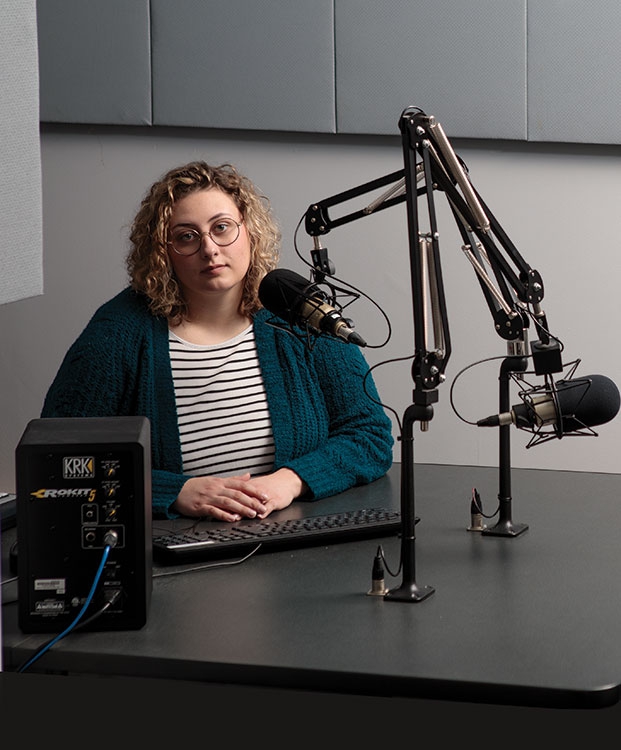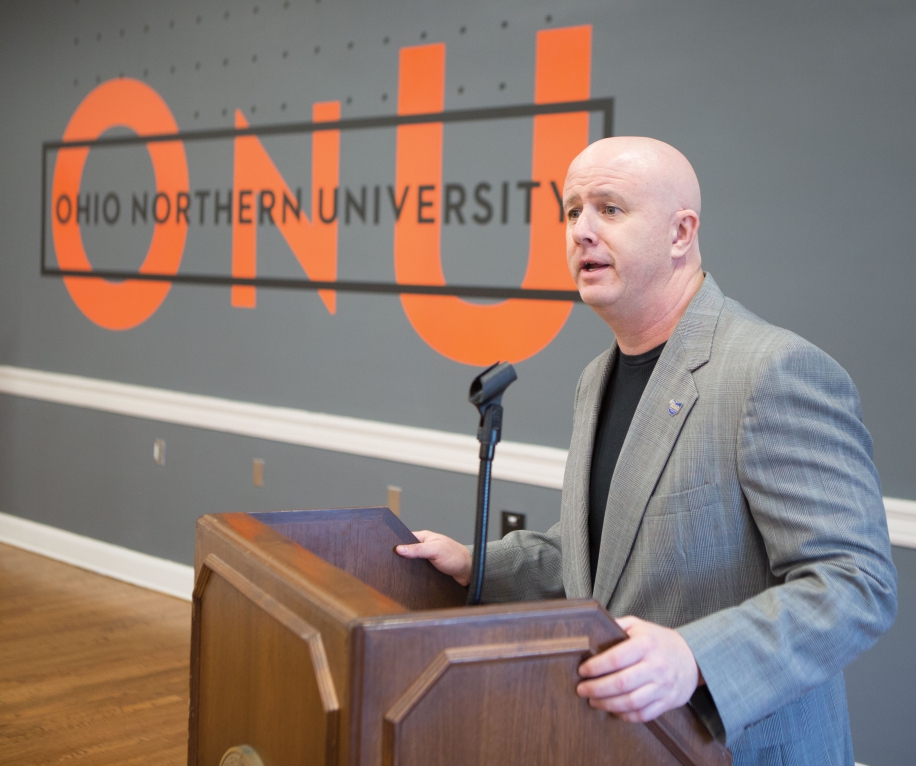Ohio Northern University has joined the fight against the opioid addiction epidemic that plagues rural America.
If there’s one thing these jaw-dropping statistics prove, it’s that opioid addiction is more than just a problem; it’s an epidemic the magnitude of which the United States has never seen before. It’s not going away on its own, and realistically, an all-out solution is likely far off in the future.
Ohio has been called “ground zero” for the opioid epidemic, and many of the most heavily impacted groups have been rural communities – just like those in Hardin County. Virtually no life is untouched by this problem. Everyone agrees that something must be done to stop the madness; the lives and well-being of our families, friends, neighbors and coworkers depend upon it.
And so we raised the million-dollar question: What can we do? What can we, Ohio Northern University, do to stop this behemoth problem from devouring our community?
It turns out that ONU is poised to do a lot. And the wonderful part about what has transpired over the past year is the way that the University community has responded. In January 2018, Ohio Northern put together an institutional battle plan. Dean of the Raabe College of Pharmacy Steve Martin successfully submitted an application and proposal, endorsed by ONU President Dan DiBiasio, for a grant offered by the Cardinal Health Foundation through its 2018 Generation Rx Community-Level Response Grant Program. Ohio Northern was chosen as one of only eight recipients of the grant.
On May 2, 2018, DiBiasio issued a letter to the entire ONU community announcing the launch of a University-wide initiative to explore solutions to the opioid epidemic in which he stated:
For the past several months, a group of deans, faculty and staff with interests and expertise related to the epidemic have been meeting to consider ways that Ohio Northern University can help address the challenges of the opioid epidemic in our community, our state and our nation. Based on the work of this Northern Opioid Alliance, Ohio Northern is designating the opioid epidemic as a special topic for study and service in the upcoming 2018-19 academic year.
Unbeknownst to the Northern Opioid Alliance, activity was already occurring on campus. Students and faculty had turned their attention and expertise to the opioid epidemic in their own right. After the University declared its intention to take on this crisis, the combined effort grew as more initiatives across campus came into the fold. The call to action led members of the campus community, some who had never considered that their areas of expertise might have a role in combating a drug epidemic, to find ways to contribute. By standing up and declaring its intent to help, ONU mobilized like few times in its history.
And while this problem won’t be overcome in a day, all of Ohio Northern is committed to seeing it overcome.
A CALL TO HELP
Junior psychology major Paige Goodwin may be a small-town student on a remote, rural campus, but she has learned that it only takes a ripple to start a wave of influence. That’s why, when she had an inkling of how she could help with the opioid issue in her own sphere of influence, she took hold of it in an inspiring and proactive way.
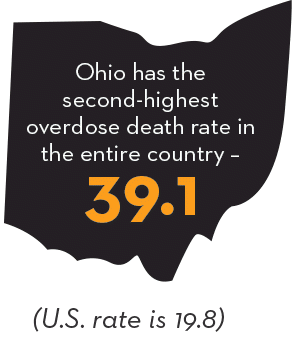 Goodwin grew up worlds removed from the escalating drug problem in a sheltered, rural community in Ashland, Ohio. For most of her adolescent years, the thought never occurred to her that people her age could get caught in drug addiction. In her mind, it was a problem isolated to the outcasts of society. Certainly, nothing like that could ever happen in her own community, to someone from a “good family” or to someone her own age.
Goodwin grew up worlds removed from the escalating drug problem in a sheltered, rural community in Ashland, Ohio. For most of her adolescent years, the thought never occurred to her that people her age could get caught in drug addiction. In her mind, it was a problem isolated to the outcasts of society. Certainly, nothing like that could ever happen in her own community, to someone from a “good family” or to someone her own age.
But that wasn’t the truth. When she was in high school, a boy from her area died from a drug overdose. He was from a prominent family and went to the same church that many of her friends did. It didn’t make sense to her.
“I lived in a very tiny world. From that point on, I just kind of decided to open my world a little bit at a time, and then it became very apparent to me that it was a much bigger issue,” she says.
The memory of this incident came back to her a handful of years later when she was working as public affairs director for WONB, ONU’s on-campus radio station. She was having a casual conversation with her boss, station director Nichole Tebbe, about what she was going to put together for “community clips,” short 15-minute radio segments about happenings in the ONU and Ada community. One of them tossed around the idea of interviewing Hardin County Sheriff Keith Everhart about a new program the county had implemented called drug recovery court, an effort to treat and rehabilitate drug addicts instead of just incarcerating them.
That one little idea was all it took to set off an unexpected chain of events.
When it comes to solving problems, Goodwin’s ONU education taught her that one of the most valuable weapons to arm yourself with is knowledge. The opioid epidemic is no different. She thought about how she’d been in the dark all those years before. What if she could help educate those around her? She was already in a position with WONB to reach an audience of her peers and community. What if the message she could send was that anyone can be a part of the solution just by being aware?
I wanted to use my platform to talk about things that mattered,” Goodwin says. “If I could just educate one person and spark a fire in them so that they could turn that into doing something to help, that was pretty much my whole goal. I wanted to learn as well. The epidemic is something that I’m really passionate about, but I didn’t feel that I knew a lot about it.
That one little idea turned into something much bigger – a comprehensive radio series looking at the opioid crisis from multiple perspectives. She interviewed not only Everhart, but six others – Dr. Keith Durkin, ONU professor of sociology; Dr. Kelly Hall, ONU chemistry lab instructor; Dr. Harold Schueler, ONU assistant professor of forensic biology; Dr. Tristin Kilgallon, ONU assistant professor of criminal justice; and Diana Carroll-Aghdam and Arin Tracy, representatives of the Kenton-Hardin County Health Department.
To prepare for the interviews, she inundated herself in research. Everything she found – eye-opening statistics, innovative new treatments, correlating issues – ignited a passion within her that couldn’t be quenched.
With each interview, she uncovered more and more that she didn’t know. She intentionally let her guests steer the conversation, referencing their own personal experiences and specialized expertise on the crisis. She had a list of questions to fall back on, but she found herself increasingly captivated by the knowledge her interviewees had to offer.
“There’s so much to be researched. There’s still so much we don’t know. I’m fascinated by the research that’s being done right now,” she says. “There’s so many aspects to it. You can look at the cause of it from so many different perspectives, just as you can look at the treatment of it from so many different perspectives.”
The series aired from Feb. 24-March 31, 2018, on WONB, a radio station with a potential reach of more than 325,000 people in parts of 13 different counties. The series was also posted to the station’s website and Facebook page, where listeners could also live stream it. It’s been submitted to a competition for the Society for Collegiate Journalists, and the Ohio Department of Health even published it. In spring 2019, her interview with Everhart won first place for audio production at the Broadcast Education Association's 2019 Festival of Media Arts.
If anything showed Goodwin the good that can come from simple education and awareness, it was her first interview with Everhart. After many years as a law enforcement officer, Everhart had a change of heart regarding addicts. For most of his career he viewed drug users as “bad apples” that needed to be behind bars. His job was to put them there. But then the Hardin County Drug Recovery Court program started, and though he was skeptical at first, he started becoming more involved, directly interacting with the participants of the program. His thinking started to shift.
“When I started talking to these people, I didn’t look at them as just another suspect,” he says. “Most of them are good people. The majority of them – they’ve just made horrible decisions. A lot of different reasons for those horrible decisions, but they’re not bad people. You’ve got to give them a chance.”
That's precisely what Everhart did. He hired one of the graduates of the program to be a dispatcher at the Hardin County Sheriff’s Office. He took in another active participant to work maintenance. One of the program’s basic principles is to place recovering addicts in a safe environment with safe people, and the way he figures it, “What’s safer than a sheriff’s office?” Everhart’s open to hiring more graduates of the program, if the opportunity presents itself, and he’s vowed this about the opioid epidemic: “No one’s going to be able to say, ‘Well, Hardin County didn’t try.’ As long as I’m sheriff, we’re going to try.”
Goodwin hopes that stories like this can encourage her listeners to believe in solving a problem that seems unsolvable.
“Even though I’m 20 years old, I’m a junior in college, I don’t feel that I can make a huge difference, but that’s not the case at all,” she says. “That’s what I wanted mostly for people to get out of it, that everybody can make a difference because anybody putting in a little bit of effort to fight this, just educating yourself, that’s going to be the most impactful thing.”
Goodwin embarked on the project because she saw a need and she wanted to help. She just wanted to do something, to help in the only way she knew how. What she didn’t realize was that as much as the project needed her, she needed the project, too.
Entering ONU, Goodwin was a biology major with her sights set on medical school. She’d wanted to be a doctor for as long as she could remember. She faithfully treaded the path of a future physician, taking the required courses, attending lectures and labs, day after day. She was doing everything the “right way,” but inside, it felt anything but right to her.
“I was going down this path where I was unsure,” she says. “I’d wanted to be a doctor for so long, and I was doing fine in my classes, but I didn’t love what I was learning about.”
She’d lost her passion.
Then, the radio series happened. She found her passion again; except, it wasn’t what she’d expected. She was especially captivated by probing the connections between adolescence and substance abuse, which she found in the field of developmental psychology. It was at this point that she evaluated the path she was on. Was becoming a doctor really what she wanted, or was she just going through the motions?
Almost immediately after the radio series aired, she finally knew the answer. She went with her heart and changed her major to psychology with a concentration in behavioral neuroscience. After she graduates from ONU, she plans to attend graduate school, where she wants to research substance abuse and how it affects brain development.
She still enjoys some things about biology, and she will even graduate with a biology minor, but since she’s made the switch, the visible shift in her demeanor and general outlook on life has done a 180-degree turn. She’s the happiest she’s been in a long time.
And she knows where the credit is due.
“It was totally fate or God or whatever miracles you believe in; that’s definitely what happened to me,” she says. “I don’t know if I would’ve ever switched my major if I hadn’t done the series and realized that I was so passionate about finding a treatment, getting a grasp on this crisis and the substance abuse. It was totally the way it was supposed to happen.”
Looking back, Goodwin can pinpoint the tipping point – that pivotal moment that left her hungry to learn more.
During her interview with sociology professor Keith Durkin, he mentioned a study he’s working on examining juvenile prescription opioid abusers in the Hardin County Court of Common Pleas, Juvenile Division. He shared with her his most eye-opening finding so far – 100 percent of the subjects in his sample have some sort of mental health problem, such as ADHD, general anxiety disorder or depression. The logical conclusion to draw, Durkin says, is that children, even as young as 10-12 years old, are turning to whatever sources they can find – their parents’ or grandparents’ medicine cabinets – trying to numb the pain of an underlying issue they neither understand nor know how to deal with.
“I realized these kids didn’t try drugs for the first time and they’re not consistently using drugs to feel better to get high as you think of most drug addicts – they were doing it to self-medicate,” Goodwin says. “That stuck with me a lot, just because we live in a society where there’s still a lot of stigma around mental illness.”
For Goodwin, this data was a turning point that put her on the path of a future career dedicated to helping solve the opioid crisis. For Durkin, it’s one piece of the puzzle in his quest to uncover answers to the crisis through data analytics.
MORE THAN DATA
Durkin never imagined himself as a heroin addiction researcher, and the fact of the matter is, in the history of modern sociology, nobody else did either. Now, his entire office is stacked with boxes upon boxes of research and data on the modern opioid epidemic. It’s his life now – sifting through hundreds of pages of surveys, studies, articles, statistics and charts. He plugs it all into state-of-the-art data analytics tools to pinpoint larger trends, causes and correlations. Studying the ravaging effects of opioids in 21st-century America is almost a science unto itself.
“When I went to grad school, heroin was isolated to homeless people, musicians and hipsters in the city,” he says. “You didn’t study it.”
In 2016, Durkin began to do just that. Not only had heroin addiction reached societal levels, it got increasingly worse. Since he started looking at the data, opioid overdose has become the leading cause of accidental death in the United States, surpassing fatalities caused by vehicle accidents and guns. In 2017 alone, 72,000 Americans died of accidental overdose, the majority of which were due to opioids – that’s more than the 58,000 Americans killed during the entire Vietnam War. In addition, the state of Ohio now has the second-highest overdose death rate in the entire country, outmatched only by West Virginia. Durkin calls it “the worst crisis in public health since the Spanish flu.”
Durkin’s educational foundation is in criminal and deviant behavior, namely substance abuse. Since the early ’90s, he’s been studying alcoholism and other types of addictions, but when the heroin epidemic began to rear its ugly head, he knew it was an instant game-changer.
“I’ve spent 20-plus years as a researcher in substance abuse, and this was different,” he says. “This drug is different. There is something definitely dangerous and deadly in how it qualitatively changes people. This interacts with the body chemistry in a way no other drug does.”
And while the heroin is bad enough; he knows there is something even more sinister on the horizon creeping into the heroin supply – fentanyl, a drug 30 to 50 times more potent than heroin. It’s so strong and so pure that even just a few grains of it can kill you. It’s the reason that Durkin’s figures show that the rate of drug abuse is going down and the rate of overdose death is going up – it’s not just lowering people’s quality of life; it’s instantly killing those who step into its path.
Opioid addiction is a medical, legal, psychological, social and spiritual problem,” Durkin says. “We need a multifaceted approach to a multifaceted challenge.
It’s come to the point where virtually nobody is untouched by this crisis, even on the small, remote campus of Ohio Northern University or rural Hardin County. The two main studies Durkin is working on right now focus on Hardin County, specifically adult addicts in the Family Drug Court and juvenile opioid abusers in the Hardin County Court of Common Pleas, Juvenile Division. He analyzes data from surveys the offenders are required to fill out. As he pores through the data day in and day out, he has come to view these numbers differently than he used to.
“That’s not a data point; that’s someone’s kid,” he says. “These are human beings. I live around them. I coach their kids. Several people that I grew up with are dead of overdoses, and it’s always the same obituary – ‘died suddenly at home.’ We don’t think of how an entire community and an entire generation is just ruined by this stuff.”
If the research and data has shown him anything, it’s that the only way to approach the scourge of opioid addiction across America is by all means necessary. In his June 17, 2017, column for The Lima News, Durkin called for “experts in criminology, sociology, medicine and psychology, as well as practitioners in the field” to work together toward a solution.
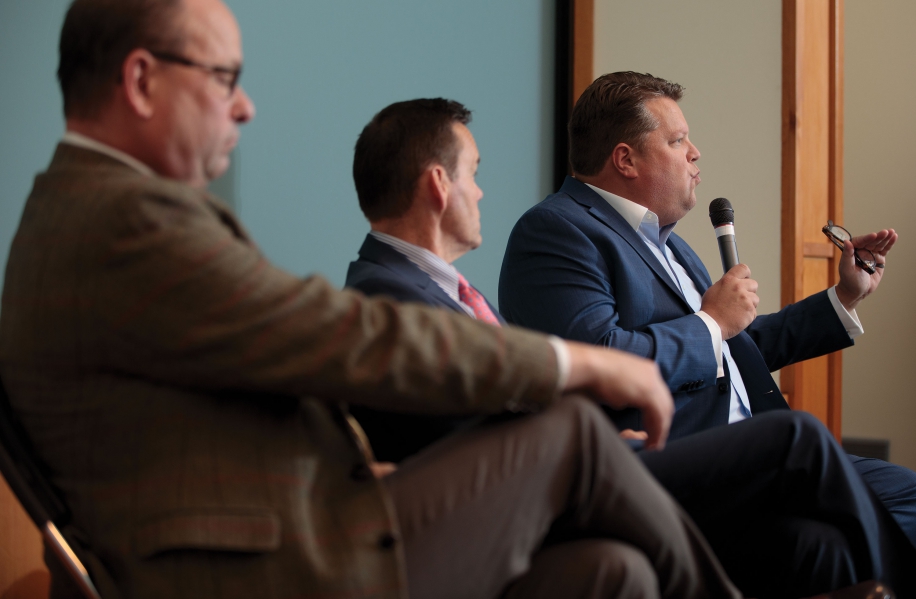
THE ECONOMICS OF ADDICTION
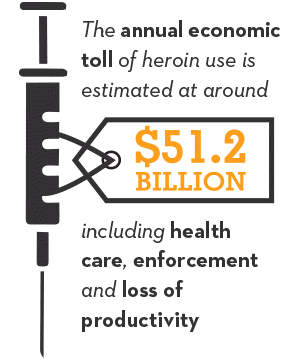 For new and expanding industries, northwestern Ohio is a land of opportunity. There’s plenty of space and plenty of earning potential for companies to stake their claim and put down some new roots.
For new and expanding industries, northwestern Ohio is a land of opportunity. There’s plenty of space and plenty of earning potential for companies to stake their claim and put down some new roots.
“Our region is growing in importance in terms of its geographic location relative to the population in the United States,” says Dr. Jimmy Wilson, ONU assistant professor of management and geography. “This is why so many industries are interested in our region for distribution centers, warehouses and manufacturing facilities. This is also why our state and federal governments are willing to invest millions of dollars toward improving the transportation infrastructure.”
But there’s one thing that’s not plentiful here – a workforce. The sad fact is that for many employers in our region and across Ohio, the biggest challenge faced in recruiting and retaining workers for skilled labor positions rests in one simple requirement: passing a drug test. Believe it or not, dozens of well-paying skilled labor jobs go unfilled today because so many in our workforce fall short of this expectation.
This discussion point was the springboard for the Dicke College of Business Administration’s “Opioids and the Effects on Labor Panel” on Oct. 25, 2018, in the Dicke Forum. Organized by Wilson and sponsored by the Northern Opioid Alliance, the public event shed light on the challenges faced by local employers and economic development professionals and the ways they are combating this often-overlooked consequence of opioid addiction.
“Passing a drug test might sound very basic and simple because there’s a lot of responsible people here in this room,” said panelist Jon Cross, president and CEO of the Hardin County Chamber and Business Alliance, “but out there in the workforce, there are those challenges, trying to find those who have good skills, who want to work and who are clean.”
The panelists explained how they are taking a collaborative approach to this issue by training employers and employees in various industries to recognize the warning signs of addiction. Teaching soft skills and providing mentorship to K-12 students is important to preventing drug use before it starts. And businesses need to work with hospitals and mental health services providers to provide support that goes hand-in-hand with drug and alcohol testing.
The event raised the opinion that it’s not just those with scientific skill sets whose help is needed; it’s everyone.
“This solution doesn’t rest in one particular area,” said panelist Jeff Sprague, president and CEO of the Allen County-Allen Economic Development Group. “You can put blame on one particular group, but that really doesn’t solve the problem. So how can we come together as a community to answer this call?”
EXPERT GUIDANCE
While not completely unaware of the opioid epidemic, many fall 2018 incoming students didn’t know enough about the issue, its origins or, most importantly, how they can be part of the solution. That’s why ONU decided to make Dreamland the 2018 summer common reading for all incoming Polar Bears.
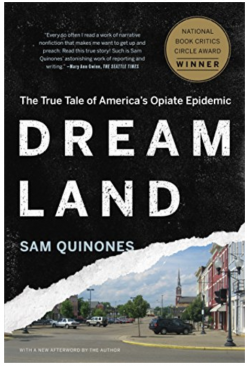 Dreamland: The True Tale of America’s Opiate Epidemic, authored by California-based journalist and former Los Angeles Times reporter Sam Quinones, chronicles the story of how the opioid epidemic came to infiltrate rural, small-town America, particularly through the heartbreaking lens of Portsmouth, Ohio. It provided first-year students a window into the epidemic many of them had never encountered before, and it started to get them thinking: What can I do to help?
Dreamland: The True Tale of America’s Opiate Epidemic, authored by California-based journalist and former Los Angeles Times reporter Sam Quinones, chronicles the story of how the opioid epidemic came to infiltrate rural, small-town America, particularly through the heartbreaking lens of Portsmouth, Ohio. It provided first-year students a window into the epidemic many of them had never encountered before, and it started to get them thinking: What can I do to help?
That discussion point was expanded when Quinones himself came to campus on Oct. 18, 2018. While here, he spoke personally to classes and delivered a public lecture in the Freed Center for the Performing Arts. His message in both settings was clear: You can make a difference.
“If you want to be a part of change, finding those local groups who are trying to help, working, adding your expertise, adding your energy to it is absolutely essential,” he says. “You will be breaking down those horribly debilitating silos that have crippled America for so long, break through those partisan differences that 24-hour news tells us is so important, and come to a place where you are working with your fellow Americans, regardless of what they believe politically, to achieve something far deeper than you ever thought possible.”
His message really resounded with freshman marketing major Kali Heaston. Prior to reading Dreamland and listening to Quinones speak, she didn’t know very much about the epidemic other than that it was a growing problem. Quinones’ account of the different factors that contributed to the epidemic, including pharmaceuticals, advertising and politics, surprised her. What struck her the most, however, was his portrayal of the widespread, tumultuous pain the issue has caused.
The experience empowered her. She looked at her own expertise in business and assessed how she could make an impact there.
“As a business student, we are encouraged to look at practical solutions that, while they may seem odd sometimes, are still effective,” she says. “When we wrote a paper for TREX (Transition Experience courses) based on Dreamland, we were asked to focus on the effect of opioids on the workplace. We focused on positive things employers can do, such as offering safe drug-disposal days, training employees and managers on signs of addiction to watch out for, and encouraging a sense of community among employees.”
The opioid crisis is forcing society to put everything on the table in search of a solution. Just a few years ago, the idea that a business would do anything other than fire a drug user on the spot was unthinkable. But as this generation of business students learns the trade amidst this crisis, odd, yet effective, solutions are what’s needed.

